Yes, there are almost 43 shark species in the Atlantic ocean. In this list, both the dangerous and gentle types of sharks are there. Even this ocean is the habitat of more sharks than other oceans.
If you are looking for more details about those shark species and how many times humans encountered those sharks, read the article till last.
How Many Sharks Are There in The Atlantic Ocean?
The exact number of sharks in the Atlantic Ocean is unknown. However, there are estimated to be around 43 species of shark living in this ocean. These species range from apex predators, such as great white sharks, to smaller and less threatening types, such as smooth-hound sharks.
The Atlantic Ocean is home to some of the most iconic shark species in the world, including the tiger shark, hammerhead shark, bull shark, and mako shark.
During the summer, sand tiger, sandbar, and smooth dogfish sharks inhabit the waters close to shore in the Mid-Atlantic. Both spiny dogfish and great white sharks are common in the waters of New England, where they hunt their natural food.
Despite the abundant diversity of sharks in the Atlantic Ocean, their numbers have drastically dwindled over recent years due to human-caused disturbances such as overfishing.
Currently, it is estimated that fewer than half a million adult individuals exist among all species combined. Unfortunately, further research will be necessary before an exact count for all shark species living in this ocean can be accurately determined.
Which Sharks Are There in The Atlantic Ocean?
Great white sharks, basking sharks, bluntnose six-gills sharks, shortfin mako sharks, tiger sharks, hammerhead sharks, thresher sharks, megamouth sharks, bull sharks, Greenland sharks, whale sharks, etc. Here are the details of sharks inhabiting in Atlantic Ocean.
Great white sharks

Great white sharks can be found in the Atlantic Ocean in coastal locations, nearshore seas, and on continental shelves. They usually eat fish, sharks, rays, and marine animals. Because of their massive size and capacity to do major harm, great white sharks are considered dangerous predators.
Basking sharks
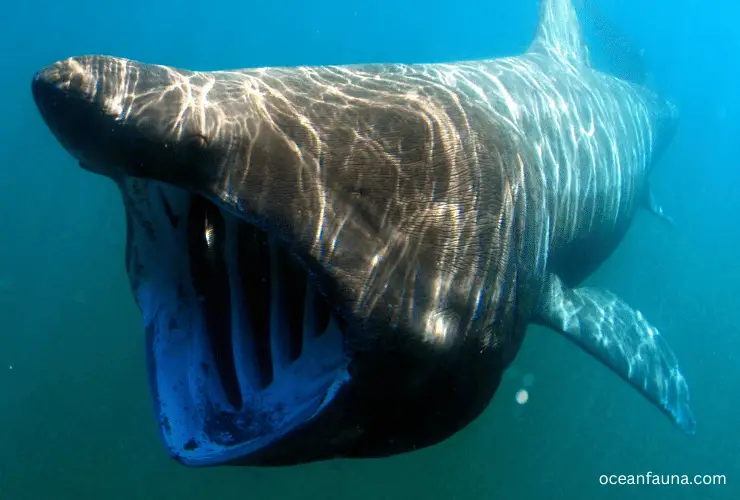
Basking sharks can also be found in the Atlantic Ocean, primarily around shorelines, where they feed on plankton, fish eggs, and tiny fish. They often move alone or in tiny groups and are not thought to be dangerous to humans.
Bluntnose sixgill sharks
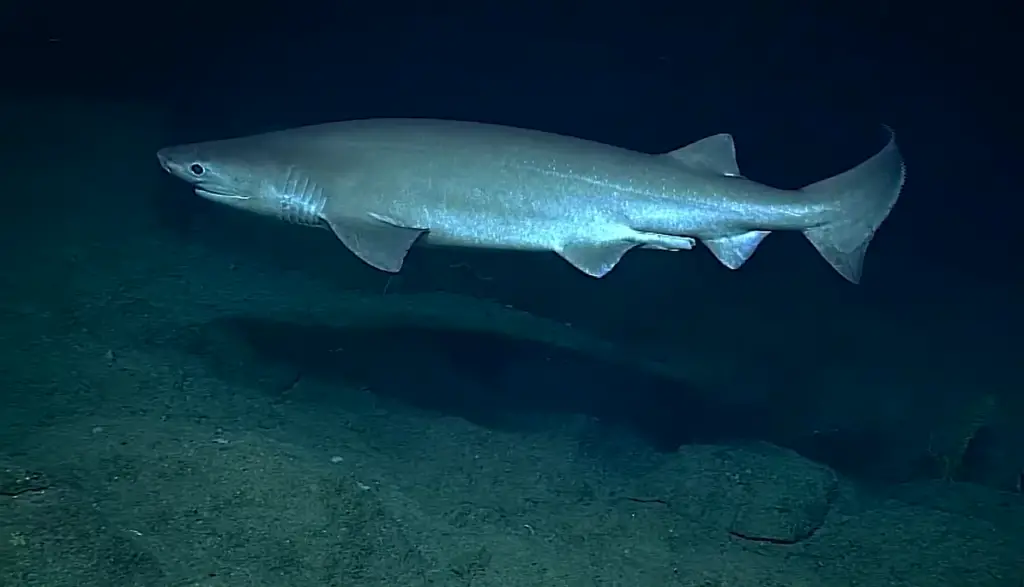
Bluntnose sixgill sharks can be found in the Atlantic Ocean as well. However, they favor deep water settings such as continental slopes and undersea canyons. These sharks mostly consume fish, although they have also been observed eating crabs, prawns, and squid.
Considering their size (up to 5 meters), these sharks pose little harm to humans and will often swim away when approached.
Mako sharks
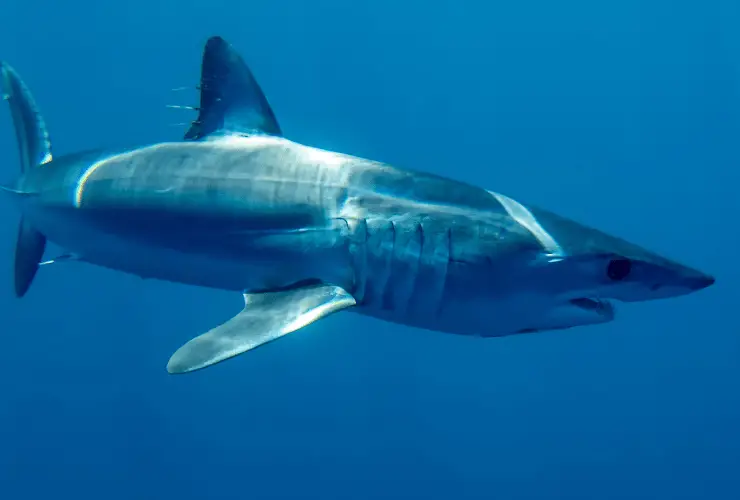
Shortfin mako sharks are also found in the Atlantic Ocean, mostly in offshore seas along continental shelves and oceanic islands. They mostly feed on pelagic fishes such as mackerel, tuna, and billfish but will occasionally pursue smaller prey such as cephalopods or other invertebrates.
Mako sharks frequently leap out of the water while hunting, making them a stunning spectacle; unless provoked, they are not considered hostile toward humans.
Tiger sharks

Tiger sharks can be found in many parts of the Atlantic Ocean, including the coasts of Central and South America, as well as the Caribbean Sea and the Gulf of Mexico. These apex predators mostly consume bony fishes and marine mammals but will also consume crabs, sea snakes, birds, and even garbage if available.
Tiger sharks are dangerous to people because of their aggressive disposition when threatened or provoked. Therefore swimmers should exercise caution when around these animals.
Hammerhead sharks
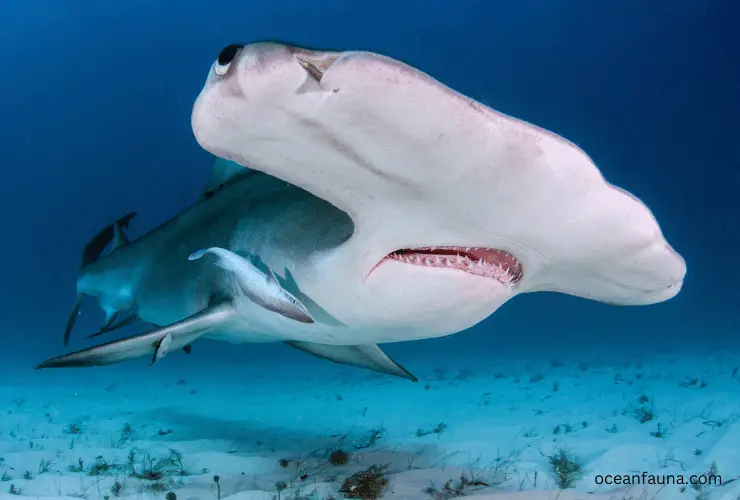
Hammerhead sharks can be found in most areas of the Atlantic Ocean, from shallow coastal waters to deeper offshore settings at depths more than 1000 meters (3300 feet). These cautious animals primarily graze on small fish and stingrays, while some larger species may consume squid or octopus if given the opportunity.
Although hammerhead sharks are not particularly violent, divers should exercise caution due to the possibility of attacks if threatened or frightened by abrupt movements, for example.
Thresher sharks

Thresher sharks live in warm temperate waters throughout much of the Atlantic Ocean, from southern Canada to Florida to northern South America, along coastal areas nearshore reefs and open waters offshore from the Cape Verde Islands all the way down into Argentina’s coastline at the Mar del Plata province region.
Throughout its range, Thresher Sharks generally feed on small schooling fishes but have been known to catch larger food as well. In terms of human interaction, threshers rarely attack unprovoked. However, they should not be approached to avoid any potential incidents for safety reasons.
Megamouth sharks

Megamouth sharks can be found in tropical to subtropical regions with borders stretching from western coasts eastward to European shores. These sharks primarily feed on plankton, krill shrimp, and jellyfish.
However, like any other species of shark, it could pose a threat if we were ever unfortunate enough to come across one during an encounter – so always use caution when swimming near these areas.
Blacktip sharks
Blacktip sharks can be found in the Atlantic Ocean, from the western coastline of Africa down to Brazil, and throughout areas of the Caribbean Sea. They are mostly solitary creatures that feed on small fish and invertebrates such as crabs, lobsters, and squid.
These sharks rarely bite humans, but they should still be respected because they are wild animals, and caution should be taken when in their presence.
Bull sharks

Bull sharks thrive in warm-temperate habitats, often found beyond estuaries, backwaters, and lagoons extending to midwater offshore zones. With a hearty appetite for bony fishes of all sizes – even larger prey when necessary during autumn months – bull sharks form an integral part of the marine food chain.
Regarding human contact, Bull Sharks remain among the top five most potentially deadly if ever seen.
Greenland sharks
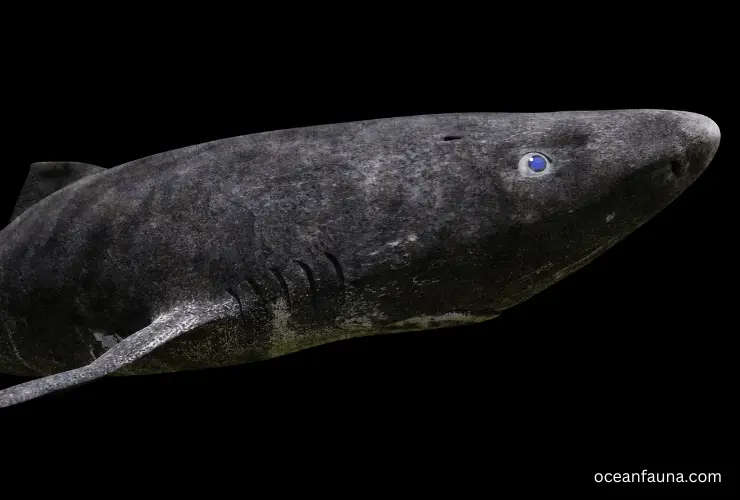
The Greenland shark is a voracious predator, normally living in the far depths of Arctic-Subarctic regions. However, they have been known to wander into shallower waters when necessary. Fortunately, like most sharks, their size and habitat range suggest these predators usually stay away from humans unless provoked.
Whale sharks
From the Indian and Pacific Oceans all across to the western edge of the Atlantic, Whale Sharks inhabit warm temperate waters. These majestic creatures consume vast quantities of zooplankton-type prey items, thereby earning them their filter feeder title.
As a result, whale sharks swim just above the seabed with mouths wide open in order to capture whatever edible materials become obtainable through ram filter feeding. Fortunately for us humans, though, there is still not one single reported attack by these whales ever since they remain so rare.
Are There Any Shark Attacks in The Atlantic Ocean?
Yes, there are shark attacks in the Atlantic Ocean, but it is not a daily matter.
According to data from the International Shark Attack File (ISAF) at the Florida Museum, there were 27 reported shark-human incidents in 2018 alone. This number is significantly higher than the four recorded incidents in the Pacific Ocean that same year.
While it’s worth noting that not all of these incidents were classified as ‘attacks,’ they still indicate a heightened danger of encountering sharks while swimming or surfing in the Atlantic.
The ISAF also investigated further and found that a contributing factor could be warmer water temperatures created by currents such as the Gulf Stream, which draws baitfish close to shore and attracts larger predators such as sharks. This indicates that areas with more aquatic activity often have a higher risk of shark encounters.
Additionally, certain species of sharks, such as the Great White, are more likely to inhabit temperate waters near coasts and continental shelves where prey populations tend to be concentrated.
Do Sharks Come to The Shore of The Atlantic Ocean?

Yes, sharks do come to the shore of the Atlantic Ocean. Many species inhabit the shallow coastal and estuarine waters along the continental shelf of North America and Europe, including Bull Sharks, Hammerheads, Great Whites, Makos, Thresher Sharks, and Tiger Sharks.
These species typically migrate into the nearshore environment in search of food or as part of their reproductive life cycle.
Some species, such as Blacktips, may stay close to shore year-round, while others may use shores as a transit route between deeper offshore habitats.
Larger sharks tend to stay in deeper water unless they become attracted to large concentrations of prey like baitfish or seals. Additionally, juvenile sharks often remain in shallow waters until they mature and venture out into open waters.
Which Precautions Should I Take Before Diving in The Atlantic Ocean?
Before diving into the Atlantic Ocean, take safety precautions. Firstly, diving with a buddy is advisable, and ensure you have all the necessary safety gear, such as a wetsuit, fins, mask, and snorkel.
Divers are also advised to stay close to shore to limit the chance of encountering large predators such as sharks. Swimmers should also avoid diving in murky or dark waters that could attract larger predators.
Divers should also be aware of the presence of dangerous species such as Bull Sharks and Great Whites and be sure to exercise extra caution when entering areas known for these species. Furthermore, divers should always check with local authorities and marine experts to learn about any potential dangers before entering the water.
Finally, all divers should never swim alone and be sure to practice safe diving practices at all times. Taking these precautions can help ensure a fun and safe experience when exploring the Atlantic Ocean.
Conclusion
The Atlantic Ocean is home to a variety of aquatic species, including sharks. While shark-human incidents are reported each year in the Atlantic, divers can take precautionary measures such as diving with a buddy and checking with local experts to increase their safety.
Also, we shouldn’t do anything which may cause any hamper to the sharks. We should follow the conservation guidelines and respect their habitat. By taking these precautions, we can ensure an enjoyable experience while exploring the Atlantic Ocean and its diverse wildlife.

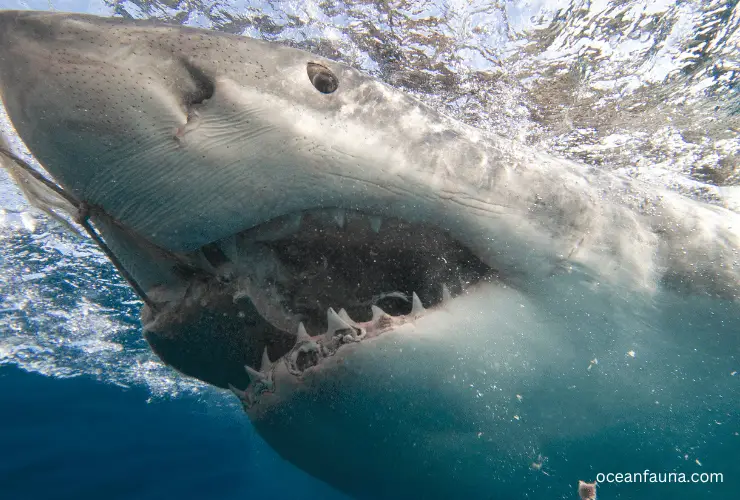
9 thoughts on “Are There Sharks in The Atlantic Ocean?”